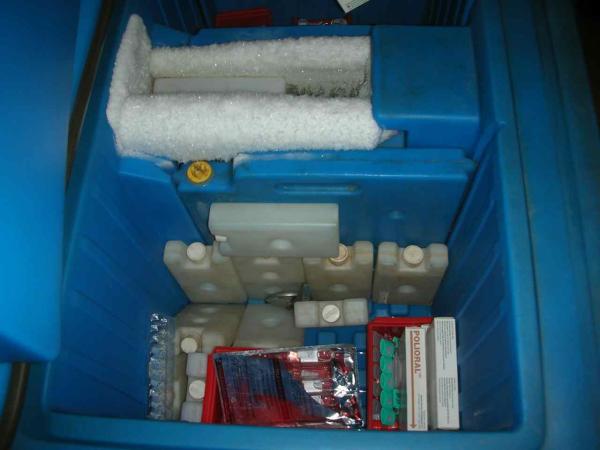The good news shot around the planet within minutes: American pharmaceutical behemoth Pfizer, in collaboration with the German firm BioNTech, have produced a vaccine that is 90% effective at preventing coronavirus infection. While that is fantastic news, there is still a lot of hard work to be done.
One of the logistical problems that few people think about is distribution. In other words, how do we get a vaccine from a factory into the arms of billions of people? Obviously, this involves airplanes and trucks, but that's not all. Some products require what is known as the "cold chain" -- a series of refrigerators that allows products to be shipped over long distances without going bad. This is how perishable food is shipped. Vaccines also almost always require a cold chain.
The trouble with Pfizer's vaccine is that it requires a really cold chain, as in -94° F (-70° C). To put this into perspective, a typical deep freezer in which you store food might run at about 0° F (-18° C). Thus, the vaccine requires a temperature so cold that the only places that typically have such deep freezers are research laboratories. Not even hospitals are likely to have something that cold. Walgreens, Rite Aid, and CVS certainly don't have them.
Why Pfizer's Vaccine Requires a Deep, Deep Freeze
 As we wrote previously, Pfizer's vaccine is based on an information-containing molecule called RNA. This molecule can be thought of as a "photocopy" of the information stored in DNA. Unlike DNA, however, RNA is very unstable. In other words, it doesn't take much for RNA to disintegrate. Storing it at -94° F prevents this breakdown, but it creates the logistical difficulty of transporting the vaccine.*
As we wrote previously, Pfizer's vaccine is based on an information-containing molecule called RNA. This molecule can be thought of as a "photocopy" of the information stored in DNA. Unlike DNA, however, RNA is very unstable. In other words, it doesn't take much for RNA to disintegrate. Storing it at -94° F prevents this breakdown, but it creates the logistical difficulty of transporting the vaccine.*
Thankfully, Pfizer has been anticipating this. According to NBC News, Pfizer has created special containers that will maintain the proper temperature when filled with dry ice. (Dry ice is that really cold stuff -- solid carbon dioxide -- you find at parties that produces "fog" when water is added. See photo from my final days in grad school.) Once placed into a normal refrigerator, the vaccine can last about five days before it goes bad.
There's a potential consequence to this. As Reuters explains, the extreme cold chain requirement will make it difficult to get the vaccine into rural areas in America, let alone impoverished regions around the world, such as in Africa or Southeast Asia. The hunt for multiple effective vaccines will go on.
*Update on November 11, 2020 @ 6:08 pm PT: The RNA is encased within little fat bubbles, and these bubbles are also extremely sensitive to heat. This is another reason the vaccine must be stored at -94° F. Thank you to McGill University's Dr. Joe Schwarcz for pointing this out.




